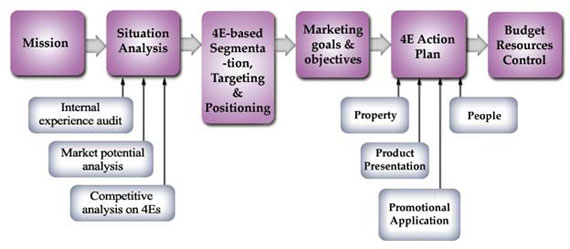


Page 2/16 |
Lesson 4 Resources Marketing Plan Framework |
A strong, highly differentiated business image attracts new customers as well as retains current customers. A marketing plan is important in positioning the business to be different from competing businesses in the minds of customers. A business operator uses the plan as a guide for decisions on improvement to content of advertising and choice of promotional events, so that customers form a strong image of the business, including its uniqueness.
This module provides a systematic approach to developing a well-designed marketing plan. Some of the reasons for having a marketing plan include that it:
- Aligns all marketing activities with the firm’s mission statement and long-term strategic plans
- Helps operators/owners to review and think objectively through all steps in the marketing process
- Assists in the budgeting process to match resources with marketing objectives
- Creates a process to monitor actual against expected results
- Helps position the firm competitively in the marketplace
A marketing plan helps define effective 4E strategies. The marketing plan presented here focuses on developing Experience Economy (4Es)-based marketing strategies for a firm. The building blocks of a 4E-based marketing plan are presented in Figure 4.1. Business operators should follow the stepwise directions and illustrations for each building block to develop their own effective marketing plan.

Figure 4.1 Building blocks of a 4E-based marketing plan
Page 2/16 |
Web site and all contents © Copyright SRDC 2009, All rights reserved. |
|
| These materials were developed as part of the Southern Rural Development Center’s National e-Commerce Extension Initiative. They are based upon work supported by the Cooperative State Research, Education, and Extension Service, U.S. Department of Agriculture, under Award No. 2005-45064-03212 Any opinions, findings, conclusions, or recommendations expressed in this publication are those of the author(s) and do not necessarily reflect the view of the U.S. Department of Agriculture or the Southern Rural Development Center. |
|